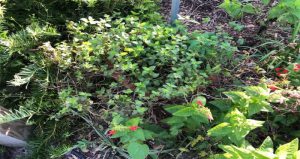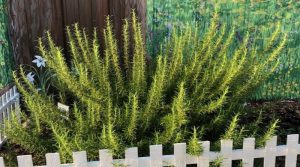Did you ever want to grow something for the dinner table in your yard, but said “I don’t have the space”, or “I don’t have the time”, or “it seems like a lot of hard work or even I have restrictions because of the homeowner’s association I live in”?
If so, then foodscaping might be the answer to growing food in your yard. Landscape beds have traditionally been planted with trees, shrubs, groundcovers, flowers and even vines while edibles were relegated to garden plots containing vegetable and herbs. Foodscaping is a growing trend that takes edibles from formal vegetable plots into landscape beds.
Foodscaping works for both newly planted landscapes and established ones. Only a few square feet are needed to begin. When most new landscapes are planted, they space plants apart for future mature growth. Until the shrubs fill in, you have usable space. The same holds true for established landscapes. Sometimes there is empty space. Whatever the cause, there now is a foodscaping opportunity.
Some of the best examples of beginning foodscaping plants are herbs and greens. A good number of cooking herbs are perennials and can add seasonal accent to the yard and flavor in the kitchen. Some examples are oregano*, thyme, rosemary, sage, lemongrass, chives, garlic chives, winter savory, mints*, chamomile, lavender, and lovage (* containers will help control the spread).

Potted chocolate mint between red salvia and yew.
Some annuals herbs include dill, fennel, cilantro/coriander, basil, garlic, sweet marjoram (perennial but acts like an annual in colder areas) and tarragon. These herbs are compact, just one or two plant in a space with a bit of room to grow is all that’s needed. Other vagetables that offer a seasonal groundcover look are greens like assorted leaf lettuces, spinach, mustard, bok choy, collards, sorrel, burnet, parsley and kale. These herbs and vegetables attract the senses with their colors, textures, and fragrances.
Once you get the hang of these easier foodscaping plants, you can branch out into more traditional garden favorites like potatoes, sweet potatoes, green beans, peas, beets, radishes, celery or anything that fits the space and cultural/environmental requirements.
Besides having some quick and easy items to eat from the yard, you are also doing your bit for the environment by reducing vehicle travel, which reduces your carbon footprint. And if you have extra, share with your neighbors and encourage them to foodscape as well. For more information check out https://gardeningsolutions.ifas.ufl.edu/design/types-of-gardens/foodscaping.html.
- Hickory Gall and Anthracnose, a Deadly Combination? - September 9, 2021
- It’s Green, Gelatinous and in My Lawn - August 11, 2021
- Vines, Vines, Vines:What’s Growing Up My Trees? - July 1, 2021

